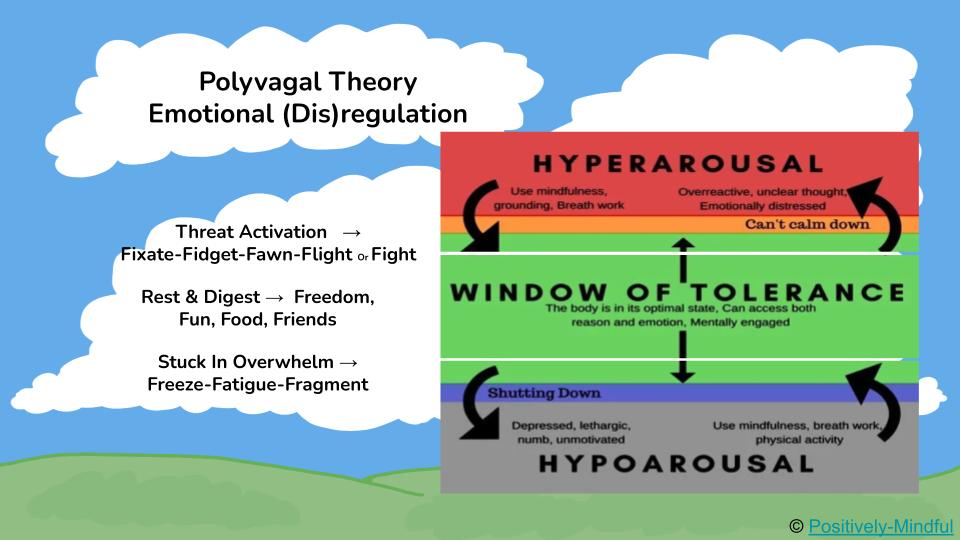|
Polyvagal theory has become core in my teaching and practice, since researching Dr Porges ideas and then through my trauma healing. It has helped me become more resilient. Here I share practical uses to improve skill in switching states and finding balance. Polyvagal Theory: Three Nervous System States I find the stuff on the internet needlessly complex. I'm going to simplify it. Imagine we have three states, or gears:
WINDOW OF TOLERANCE A better way of considering it is to think of the green zone in the middle as a window of tolerance that you want to keep returning to and expanding through deliberate practice of dipping into the stretch zones either side. This is a nicer way of describing the Comfort Zone, Stretch Zones and Panic Zone. AIM: FLEXIBILITY AND RESILIENCE We are ultimately aiming for psychological and bodily flexibility. To be able to move between states, so we can be resilient to them when they come up. We cannot just stop them from appearing. They call it the autonomic nervous system for a reason. To become more flexible and resilient we can think of it like a muscle. NEUORCEPTION - MINDFULLY BECOME AWARE OF YOUR CURRENT STATE But first you have to be AWARE of what state you are in. This is actually quite simple - tune in (mindfully) to the body and notice if you are activated into panicked action or frozen in immobile confusion and numbness. To do this however takes some skill. When we practice mindfulness we develop our nueroception -our ability to be aware and even name and describe our internal state. Shifting state from Immobile Lizard State (Freeze / Hypoarousal)OK so you've discovered you're stuck in indecision and confusion, immobile and static. What next? I can numb out so often when I'm overwhelmed and so basically I've learned that in this state we need to MOVE and embrace some discomfort. Here are some ways to help you. I have put *** next to the ones I use.
Shifting from Activated Monkey State (Fight/Flight / Hyperarousal)Once activated you may wish to crack on with work - great. Ideally we want to bring moderation to our action, not just use work to become another distraction from dealing with our internal state of stress. For people who are manic or workaholics this is particularly important (I can be like this). It is best to induce a state of calm learning so we can have an open mind as we move through our day. Calming things might include (*** = I use them):
Don't:
Pro-active practices - prepare!So we can be ready for this by developing our neuroception and building healthy habits into our lives. These are what I recommend:
0 Comments
Leave a Reply. |
AuthorsNeil Morbey is a meditation teacher, group facilitator and inspiration guide for Positively-Mindful.com Blog Index
Archives
May 2024
|




 RSS Feed
RSS Feed